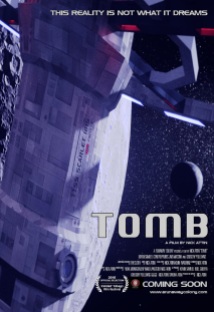Most people in music and sound engineering in T&T think the only avenue they have is stage and radio, but I have been able to go into animation, film, technology and video games.
Musician and sound engineer Navid Lancaster has an impressive list of achievements to his name. This isn’t surprising as he has over 20 years experience in both fields, beginning at age 19 when he played guitar for a band called AK47 and then formed his own band called Broken Mirroz at age 22.
 Lancaster got his start in music production and sound engineering with music producer Kenny Phillips. He said the experience was brutal, as it was just before Carnival time but it was the best way to learn.
Lancaster got his start in music production and sound engineering with music producer Kenny Phillips. He said the experience was brutal, as it was just before Carnival time but it was the best way to learn.
“Nobody could sit down and show you every single button, you have to get the trial by fire. I think a lot of people only see the front end of producing and they think it’s a glamorous life but it’s actually very brutal hard work, but I have a serious love for music and tech, so that kept me afloat.”
Lancaster went on to work at a small recording studio in St. James, then moved on to Spektakula Productions as a sound engineer and NAPA as a media archive producer and audio engineering officer. During that time, he obtained his Bachelor of Technology in Media and Communication and got First Class Honours in Media and Communication from the University of Greenwich. In 2007, while pursuing his Masters in New Media and Society from the University of Leicester, he started his own company, Lancast Ltd.
He said he’s a musician and a producer at heart so he jumped at the chance to work on films, beginning with Buck the Man Spirit in 2012 and Jab in the Dark in 2013, both of which won People’s Choice Awards at the T&T Film Festival. In 2014 and 2015 he worked on the films Pan: Our Music Odyssey and Pan: Our African Odyssey, which was awarded Best Trinidad Feature Length Documentary. This year, he worked on part of the soundtrack for Tomb, which is the first sci-fi feature-length film ever done in T&T.
Lancaster has also worked on many animation projects, including the Banana Boat Animated Series, which won second place at last year’s Animae Caribe Festival and is currently searching for funding; The Old Higue, a collaboration with the Guyana Animation Network (GAN) and the Suriname Animation Network (SAN); and recently, the soundtrack for the series USAI. He’s also worked on a series of mobile applications with Trinidadian developer Anthony Phills, including 30 Stories, 30 Days, and Designing for the Home Run King, about world record baseball player Barry Bonds.
He said working in film and animation is a craft which has to be honed and it’s very much about knowing what your place in the process is. Lancaster said his job is basically post-production, which means it happens after filming or animation has already been done.
“Music is integral, but it’s a supporting role. It’s supposed to give the musical cues of when things are going to happen, what emotions you are supposed to feel or even heighten the emotions that you’re seeing visually and texturally from the script. So my job is basically to support and serve the story.”
He said he constantly questions the director and producers about what they need and what they want the audience to feel, which they don’t always appreciate until they get the results. In addition, he tries to go on set to enhance his understanding of the final product.
He said for film especially, it is essential to be knowledgeable of all kinds of musical styles.
“Even if you’re not familiar with a certain type of music, or a certain trend in how music is, YouTube is your friend, you could find that out very easily, I don’t think there’s any excuse not to know.”
He said there are three main reasons for having a wide appreciation of music. “One, it makes you more open-minded to ideas from the director, two, it will give you more work once the market finds out what you can do and three, you’ll be able to incorporate ideas from different cultures, different cultural and rhythmic and instrumental ideas in your soundtrack, in an unexpected way.” He said it’s possible to create a soundtrack using instruments from other cultures that may work in the context of the diaspora being targeted, but that can “sound totally strange or weird or maybe even offensive for another culture, so that’s something composers have to be cognizant of.”
Lancaster credits his success with his willingness not only to work hard, but to find new experiences that will aid him in his career. He said most people in music and sound engineering in T&T think the only avenue they have is stage and radio, but he has been able to go into animation, film, technology and video games. Lancaster also said he goes to events and forums outside of music and sound engineering, such as Animae Caribe, videogame forums, technology shows, comic conventions and business conventions, and markets himself shamelessly.
“People are thinking too small in terms of what they can do with this particular set of skills they have. If they keep it only in the “safe” zone, they will always keep fighting with the majority of people who are going into that same bottleneck. My vision is to be the biggest and most respected music producer in the world, who bridges music and technology. That’s my goal, so everything that I do work-wise, even entertainment-wise, is aiming towards that goal.”
This article was originally published in the T&T Guardian (04/12/2016)




One comment